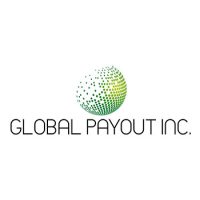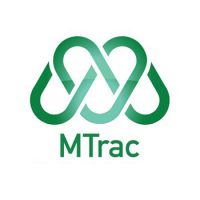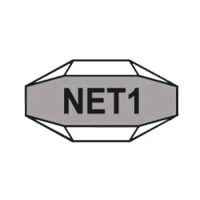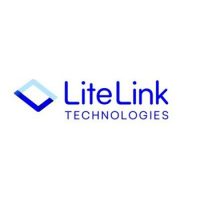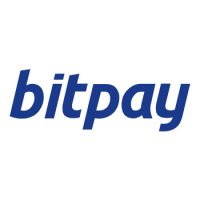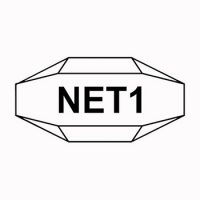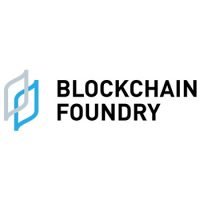Blockchain
From Centralisation to Empowerment: The Blockchain Revolution in UK Further Education

In the UK, the further education (FE) sector is under the stewardship of various awarding bodies. These entities are crucial, as they govern qualifications and oversee assessments, ensuring that educational standards are uniformly maintained. This centralised system of control guarantees a level of consistency and quality across educational institutions. However, as with all centralised control systems which are like a juggernaut to turn, it also introduces certain rigidity into the system, making it less responsive to the rapidly changing skills landscape and the emerging needs of employers. Furthermore, the administrative processes involved in verifying achievements can often be cumbersome and time-consuming.
Potential for Disruption through Blockchain Technology
Blockchain technology presents a compelling alternative to this traditional system. Its characteristics of decentralisation, security, and immutability make it an ideal platform for managing educational records and credentials more flexibly and efficiently. This technology can facilitate the recognition of micro-credentials from various providers, empowering learners to take greater ownership of their educational journeys. Additionally, blockchain can streamline the verification process, significantly reducing bureaucracy and increasing the efficiency of recognising achievements.
Understanding Blockchain Technology
Although much of the blockchain technology is relatively new, it has been in existence conceptually since at least 1991, with a practical example being launched in 2009 – the original gangster, Bitcoin. It is probably useful here to explain in layman’s terms what is meant by blockchain.
Blockchain is a type of digital record-keeping system where information is stored in linked “blocks” that form a chain. The crucial part: copies of this chain are held by many different computers, making it nearly impossible to alter the information without everyone noticing. So, if information in one block is changed by one person on one computer, it automatically changes every other version of that block across the chain (there are no ‘versions’ but I hope you get what I am saying!)
Think of blockchain like a shared Google Doc with some important differences:
Everyone has a copy. Everyone connected to the blockchain network holds a completely identical copy of the document.
It’s constantly growing. As new information is added, a new section (“block”) gets added to the document.
It’s tamper-proof. If someone tries to edit a previous section of the document, everyone else on the network will immediately know because the whole chain of linked sections would be disrupted.
Key Blockchain Terms
Terms that will be heard in this blockchain world could include:
Blockchain: A shared, digital ledger that records transactions across a network of computers in a way that is secure, transparent, and tamper-proof.
Ledger: A ledger is simply a record of transactions. Think of it like an accounting book where every financial transaction or change in ownership of an asset is documented.
Block: A digital container that stores information about transactions. Each block is linked to the one before and after it, forming a chain.
Decentralised: There’s no single authority controlling the information. Everyone on the network has a copy and agrees on the validity of the data. This is a sticking point for most big organisations who have held control of information up until now.
Cryptography: This is like using secret codes to protect information on the blockchain. It makes sure that past records cannot be changed and helps verify that transactions are coming from the right people (it encrypts it).
Encryption: When information is scrambled on the blockchain like a secret code. To read the information, you need a special key to unscramble it.
Immutability: Once something is recorded on the blockchain, it cannot be changed or deleted. This is like writing something in permanent ink – it creates a record that everyone can trust.
Cryptographic Hash: A unique mathematical code generated from the data in a block. Any change to the data would result in a completely different hash code, exposing the tampering.
Smart Contract: A self-executing program stored on the blockchain that automatically triggers actions based on predefined conditions.
Verifiable Credentials: Digital records of a learner’s achievements or qualifications stored on a blockchain. They are secure, tamper-proof, and can be easily verified by potential employers or educational institutions.
Blockchain in Education: Global Examples
There are several examples of blockchains in education (albeit primarily outside the UK) as well as countless use cases from outside of the sector in finance, healthcare, energy and security services. Before we look at how this might work in the UK, let’s look at a couple of education examples from around the world.
1.Holberton School, USA, offers software engineering programmes using blockchain to track learner progress and create alternative credentials outside of traditional degrees. They use smart contracts and project-based assessments rather than time-based credits.
2.Learning Machine, a global company, issues blockchain-based verifiable credentials, also known as Blockcerts. They’ve worked with institutions like MIT on digital diplomas since 2017.
3.The University of Nicosia in Cyprus was one of the first universities to accept Bitcoin payments and issue academic certificates on the blockchain, providing tamper-proof records for their graduates. They have been delivering courses on blockchain since 2013 and offer their certifications in this decentralised fashion.
The Road to Change in the UK: Applying Dannemiller’s Formula
To move a behemoth like FE qualifications into a decentralised blockchain model will be no mean feat, and it certainly won’t be without its challenges as a monumental change. I have written extensively elsewhere about Dannemiller’s Formula for Change but I think a simple application of this formula may be useful.
C = D + V + F > R
The formula essentially says:
For change to happen, there must be must be a dissatisfaction with the status quo + a vision of what is possible + your concrete first steps towards change and these three things must be GREATER THAN the resistance to the change. That does not mean you don’t have resistance; it means the dissatisfaction, vision and first steps are more compelling than the resistance.
Dissatisfaction with the Current System
The current centralised system, while providing stability and consistency, also introduces limitations that could lead to dissatisfaction among students, educators, and employers. These stakeholders might feel constrained by the rigidity of qualification structures and the slow pace at which the system responds to new skills demands. There is a healthy disquiet about the power that is wielded by assessment organisations, the money that they demand and the outdated models and processes they employ.
Envisioning a Blockchain-Enabled Future
A decentralised, learner-centric educational ecosystem, enabled by blockchain, offers a visionary alternative. Such a system would not only address the current dissatisfactions but also provide a more agile and responsive framework for credentialing. This vision encompasses a future where learners can accumulate and easily share verifiable microcredentials from diverse providers, facilitating lifelong learning and career development in a way that aligns with future workforce needs.
OneFile – The complete solution – advert
Initial Steps and Addressing Resistance
To move towards this vision, the FE sector could initiate blockchain-based pilot projects. These projects would focus on issuing and managing microcredentials, providing a tangible demonstration of blockchain’s potential benefits. These initial steps need to be carefully designed to ensure they complement, rather than directly challenge, the existing qualifications framework, thereby minimising resistance.
Addressing potential resistance from awarding bodies and other stakeholders is crucial. It’s important to recognise the current value and importance of these bodies while also advocating for a gradual integration of blockchain technology. The aim may be to enhance, rather than replace, the existing system, by offering additional pathways for learners and more efficient mechanisms for credential verification.
Blockchain’s Role in Democratising Education
Blockchain technology, by its very nature, is poised to democratise the educational landscape. This would mean a significant shift from the traditional, centralised authority of awarding bodies to a more distributed and learner-centric model. This technology offers an immutable, secure, and transparent mechanism for recording and sharing educational achievements. Such a system not only benefits learners by providing them with more control over their educational records but also offers employers a more reliable method of verifying potential employees’ qualifications. No longer will an employer require someone to produce their Maths and English certificates from a bygone era, where letters replaced numbers that replaced letters, and they don’t know their IB from their AS. Not only that, this raises all manner of questions about the validity of a GCSE from 20+ years ago and its relevance for a job role in 2024 and beyond (but that is beyond the scope of this article!)
The concept of microcredentials, facilitated by blockchain, introduces a modular approach to education, allowing for the accumulation of smaller, stackable qualifications. This approach aligns well with the needs of a rapidly changing job market, where lifelong learning and continuous professional development are becoming necessities. For the UK, embracing microcredentials on a blockchain could greatly enhance the flexibility of the FE sector, enabling it to quickly adapt to emerging skills and industry demands. What might it look like if a twelve-week diploma programme were blockchain-accredited, added to a learner’s digital portfolio and publicly visible to a potential employer?
Challenges and Considerations
However, the path towards integrating blockchain within the FE sector is not without its challenges. Key among these is the digital divide, which could potentially exacerbate educational inequalities if not addressed. Ensuring that all learners have equal access to the technology necessary to participate in this new educational model is crucial. Furthermore, there’s the challenge of ensuring that educators and institutions are adequately prepared and trained to operate within this new framework.
For blockchain’s potential to be fully realised in the UK’s FE sector, supportive policy and regulatory frameworks are essential. The government, along with educational authorities, needs to develop clear guidelines and standards for the use of blockchain in education. This includes addressing concerns related to privacy, data protection, and the recognition of blockchain-based credentials both nationally and internationally.
The global nature of blockchain technology suggests that the UK’s approach to integrating it within the FE sector should not be insular. Engaging in international collaboration to establish common standards and interoperability for blockchain-based educational credentials can enhance their global recognition and mobility. This could be particularly beneficial for students seeking employment or further education opportunities abroad.
Conclusion: Looking Towards the Future
Envisioning the future of the UK’s FE sector with blockchain integration brings forth a landscape where education is more personalised, flexible, and responsive to the needs of learners and the economy. In this future, learners navigate their educational journeys with a digital wallet of credentials, seamlessly transitioning between roles, careers, and learning opportunities. Institutions become more agile, capable of offering a wider array of qualifications that are directly aligned with current industry needs.
The journey towards this though represents a profound shift in how education and qualifications are approached. It promises a future where learning is more accessible, verifiable, and tailored to the needs of individuals and the broader economy. While challenges remain, particularly in terms of policy, infrastructure, and acceptance, the potential benefits in terms of increased efficiency, transparency, and empowerment for learners make it a path worth exploring.
This initial exploration, grounded in both the visionary potential and pragmatic considerations of blockchain in education, sketches a roadmap for a transition that is as much about technological integration as it is about cultural and systemic change. For the UK’s FE sector, it is a call to not just envision but actively shape a future that leverages blockchain technology to create a more inclusive, responsive, and learner-centred educational ecosystem. And that’s what really matters.
Source: fenews.co.uk
The post From Centralisation to Empowerment: The Blockchain Revolution in UK Further Education appeared first on HIPTHER Alerts.
Blockchain
Blocks & Headlines: Today in Blockchain – May 9, 2025

Welcome to Blocks & Headlines, your daily deep-dive into the most impactful movements in blockchain technology and the cryptocurrency sector. In today’s edition, we unpack five major stories that illuminate trends in funding, sustainability, payment innovation, banking collaborations, and technical interoperability—all vital signposts for developers, investors, and Web3 enthusiasts. Here’s what’s on the docket:
-
Camp Network’s New IP-Focused Testnet
-
Blockchain for Sustainable Packaging
-
Meta’s Blockchain-Based Payment System Plans
-
Mocse Credit Union Joins Metal Blockchain’s Innovation Program
-
Apex Fusion on the Urgency of Blockchain Defragmentation
Through concise reporting, opinion-driven analysis, and SEO-optimized insights—featuring keywords like blockchain, cryptocurrency, Web3, DeFi, and NFTs—we’ll explore how these developments shape the next wave of decentralized finance, enterprise adoption, and mass onboarding.
1. Camp Network Launches Testnet for IP-Focused Blockchain
What Happened:
Camp Network has unveiled its long-anticipated testnet following a $30 million funding round led by leading crypto VCs. This new network is tailored for intellectual property (IP) asset tokenization, aiming to streamline rights management and royalty payments via smart contracts.
-
Technical Highlights:
-
Modular Consensus: Hybrid PoS/PoA consensus that allows IP rightsholders to validate transactions.
-
On-Chain Licensing: Smart contracts enabling programmable licensing terms, automated royalty splits, and revocable access controls.
-
Interoperability: Bridges to Ethereum and Polygon enable seamless asset transfers and liquidity provisioning.
-
Analysis & Implications:
By focusing on IP tokenization, Camp Network addresses a glaring gap in current NFT platforms, which often lack robust legal-framework integration. This specialization could catalyze:
-
New Revenue Models: Musicians, authors, and inventors can fractionalize royalties, unlocking liquidity and democratizing investment in creative works.
-
Institutional Adoption: Traditional publishers and studios may pilot tokenized licensing, accelerating blockchain’s entrée into regulated industries.
-
Secondary Markets: With on-chain licensing data, marketplaces can enforce provenance and anti-fraud measures more effectively.
Camp Network’s testnet success will hinge on developer tooling, legal partnerships, and gas-fee economics. Should it deliver a smooth UX and clear ROI for rightsholders, it could set a new standard for Web3 IP infrastructure.
Source: The Block
2. Blockchain as a Sustainable Packaging Game-Changer
What Happened:
A recent report explores how blockchain can revolutionize sustainable packaging by delivering end-to-end supply-chain transparency. The solution combines on-chain tracking of materials, IoT sensor data for carbon footprint measurement, and tokenized incentives for recycling.
-
Key Components:
-
Immutable Traceability: Each packaging component is logged on a public ledger, enabling consumers to verify sustainable sourcing.
-
Carbon Credit Tokens: Brands earn tokenized credits when they hit recycling targets, tradable on carbon-market DAOs.
-
Consumer-Facing Apps: QR-code scanning interfaces reveal environmental impact metrics and reward programs.
-
Analysis & Implications:
Integrating blockchain with sustainable packaging tackles greenwashing and fragmented reporting. The ability to tie physical materials to on-chain records introduces:
-
Enhanced Accountability: Brands face real-time public scrutiny of ESG claims, improving trust and regulatory compliance.
-
Market Mechanisms: Carbon credit tokens linking packaging to broader DeFi ecosystems incentivize circular economy behaviors.
-
Consumer Engagement: NFTs or loyalty tokens tied to sustainable purchases could accelerate brand loyalty in eco-conscious demographics.
This convergence of blockchain, IoT, and token economics exemplifies how decentralized technologies can underpin not only financial systems but also planetary stewardship.
Source: Yahoo Finance
3. Meta Plans New Blockchain-Based Payment System
What Happened:
Meta is reportedly developing a blockchain-powered payment network to underpin its digital wallet ambitions, aiming to facilitate low-fee remittances, in-app purchases, and peer-to-peer transfers across Facebook, Instagram, and WhatsApp.
-
Proposed Features:
-
Cross-Border Settlements: Utilizing stablecoins pegged to major fiat currencies to avoid volatility.
-
Layer-2 Scalability: Built atop an Ethereum Layer-2 or a proprietary chain to ensure sub-second confirmation times and minimal fees.
-
Regulatory Compliance: On-chain KYC/AML checks integrated via permissioned sidechains.
-
Analysis & Implications:
Meta’s push into blockchain payments could reshape the competitive landscape:
-
Crypto On-Ramp: With 3 billion+ monthly users, built-in wallet functionality could massively expand mainstream cryptocurrency adoption.
-
Disintermediation Risk: Traditional payment processors and remittance services face margin compression as Meta internalizes transaction flows.
-
Regulatory Scrutiny: Centralized control of a global payments network raises data-privacy and antitrust questions, likely attracting significant oversight.
If Meta balances decentralization ethos with compliance demands, it could serve as a blueprint for other Big Tech firms eyeing Web3 integration.
Source: Dig.watch
4. Mocse Credit Union Joins Metal Blockchain’s Banking Innovation Program
What Happened:
Mocse Credit Union has signed on to Metal Blockchain’s Banking Innovation Program, a consortium designed to accelerate pilot projects in tokenized lending, fractional deposits, and programmable savings accounts.
-
Program Benefits:
-
Sandbox Environment: Regulatory-compliant testbeds for tokenized asset experiments.
-
API Integrations: Plug-and-play modules for KYC, smart-contract auditing, and fiat-crypto on-ramps.
-
Co-Innovation Workshops: Joint labs with fellow financial institutions and DeFi projects.
-
Analysis & Implications:
This partnership signals the banking sector’s growing willingness to explore blockchain beyond hype:
-
Tokenized Deposits: By issuing interest-bearing stablecoin equivalents, credit unions can attract a new demographic of digitally native savers.
-
Risk Management: Sandboxed pilots allow institutions to evaluate smart-contract risks without exposing core systems.
-
Interoperable Finance: Aligning legacy banking with DeFi rails can unlock hybrid products—e.g., flash loans collateralized by insured deposits.
Such collaborations could spearhead a wave of embedded finance offerings, blurring the lines between centralized and decentralized banking infrastructures.
Source: Newswire
5. Apex Fusion: Defragmenting Blockchain for Mass Adoption
What Happened:
In an op-ed, Apex Fusion argues that blockchain interoperability and defragmentation are critical prerequisites for mainstream Web3 uptake. The piece advocates standardized cross-chain messaging protocols, unified identity layers, and aggregated liquidity pools.
-
Core Proposals:
-
Protocol Neutral Messaging: A universal middleware to transmit value and data across disparate chains.
-
Decentralized Identity (DID): A shared credential framework enabling seamless dApp logins without wallet-hopping.
-
Liquidity Hubs: Cross-chain Automated Market Makers (AMMs) that pool assets to reduce slippage and gas friction.
-
Analysis & Implications:
A fragmented blockchain ecosystem hinders user experience and developer efficiency:
-
Onboarding Friction: New users face wallet complexity, chain-switching hassles, and inconsistent UX across apps.
-
Capital Inefficiency: Isolated liquidity silos lead to higher trading costs and limit DeFi yield optimization.
-
Developer Overhead: Building multichain dApps requires fragmented toolkits and disparate security audits.
Solving these challenges through interoperable frameworks will be pivotal for DeFi, NFT, and enterprise Web3 solutions to scale beyond niche audiences. Apex Fusion’s recommendations may inform upcoming standards efforts by bodies like the Blockchain Governance Initiative Network (BGIN).
Source: Euro Weekly News
Conclusion
Today’s blockchain developments reflect a maturing industry at the crossroads of innovation and integration:
-
Specialized Networks: Camp Network’s IP testnet showcases niche use-cases driving targeted blockchain deployments.
-
Sustainability & Token Economics: Linking environmental impact to on-chain incentives demonstrates blockchain’s potential in non-financial arenas.
-
Big Tech Entry: Meta’s payment ambitions could accelerate global crypto adoption while raising regulatory stakes.
-
Banking Collaboration: Programs like Metal Blockchain’s underscore financial institutions’ appetite for safe, regulated Web3 experimentation.
-
Interoperability Imperative: As Apex Fusion highlights, defragmentation and cross-chain standards are essential for seamless UX and liquidity flow.
As blockchain weaves deeper into finance, supply chains, and digital ecosystems, the future hinges on striking the right balance between decentralization, compliance, and user-centric design. Stay tuned for tomorrow’s Blocks & Headlines where we continue to chronicle the pulse of Web3 innovation.
The post Blocks & Headlines: Today in Blockchain – May 9, 2025 appeared first on News, Events, Advertising Options.
Blockchain
Bitget Blockchain4Youth sostiene l’innovazione del Web3 e dell’IA all’hackathon “Build with AI” di Google Developer Group
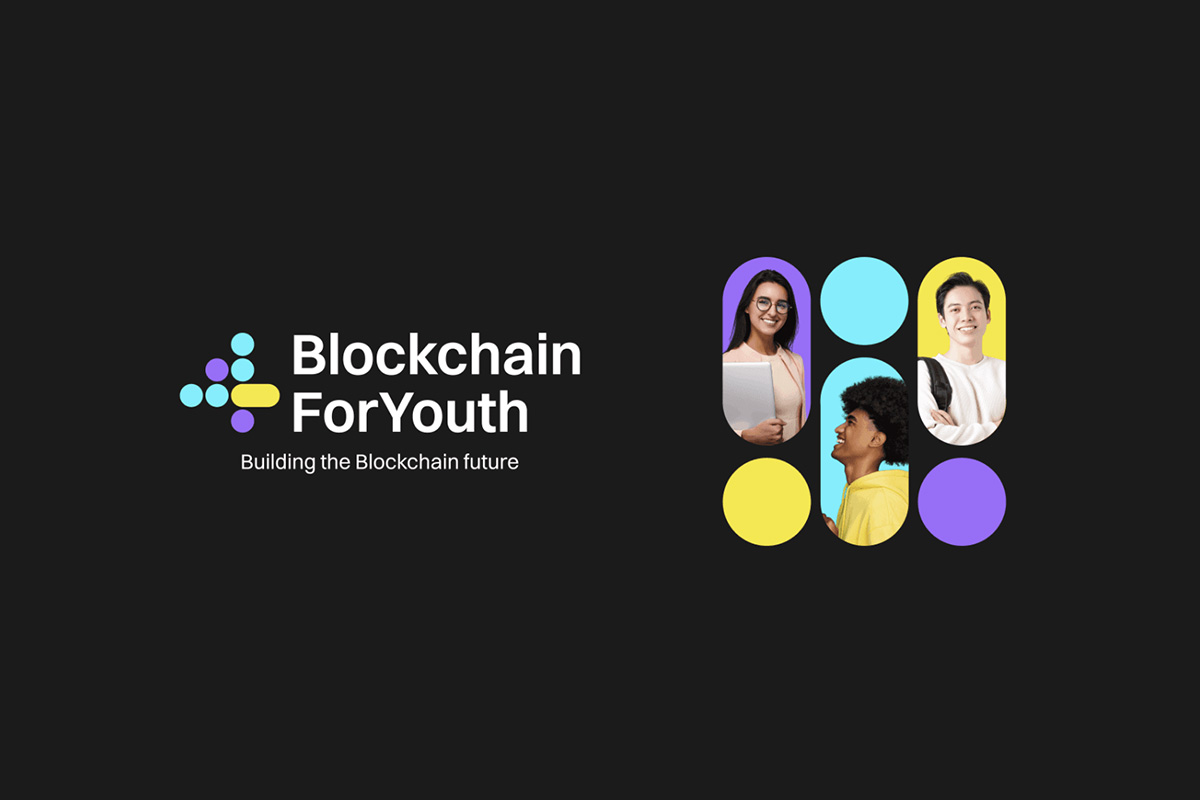
Bitget, società Web3 e uno dei principali exchange di criptovalute, ha ottenuto un riscontro significativo in occasione del recente hackathon “Build with AI”, tenutosi dal 2 al 5 maggio 2025 presso la Constructor University. Spingendosi oltre la semplice sponsorizzazione, l’iniziativa Blockchain4Youth di Bitget ha coinvolto attivamente più di 130 studenti di talento.
L’evento, organizzato dai Google Developer Groups (GDG) on Campus, ha offerto a Bitget uno spazio dinamico per entrare in contatto diretto con gli innovatori tecnologici di nuova generazione. Nel corso di una presentazione dedicata, è stato introdotto il programma Blockchain4Youth Builder, che mostra l’impegno di Bitget nel formare giovani talenti all’interno dello spazio del Web3. Questa partecipazione evidenzia l’approccio lungimirante di Bitget nell’integrare la formazione in materia di blockchain con i settori emergenti come l’IA, riconoscendo il loro potenziale combinato.
Gli studenti hanno lavorato alla creazione di modelli basati sull’IA e di prodotti in fase iniziale utilizzando gli strumenti avanzati di Google, mentre la presenza di Bitget ha offerto una prospettiva unica su come la blockchain possa migliorare ed essere integrata nelle soluzioni di IA. Questa interazione con il mondo reale ha fornito preziose indicazioni agli studenti, colmando il gap tra conoscenze teoriche e applicazione pratica all’interno del panorama tecnologico in rapida evoluzione.
“La formazione rimane un principio fondamentale della nostra missione e, attraverso iniziative come Blockchain4Youth, intendiamo fornire alle nuove generazioni le competenze necessarie non solo per esplorare, ma anche per plasmare attivamente questo settore dinamico”, ha commentato Vugar Usi Zade, COO di Bitget. “Collaborare con comunità come il Google Developer Group offre una base preziosa per connettersi con talenti di spicco e aiutarli nel percorso di utilizzo della blockchain per creare soluzioni di impatto. Blockchain4Youth continuerà a espandere la sua portata, favorendo la crescita dei futuri leader del Web3 in grado di cogliere le numerose opportunità offerte da questa tecnologia”.
Il coinvolgimento mostrato all’hackathon “Build with AI” di GDG è un elemento chiave del più ampio programma Blockchain4Youth di Bitget, l’iniziativa aziendale dedicata alla Responsabilità Sociale d’Impresa (RSI). Questo programma mira a favorire la prossima generazione di leader Web3 attraverso opportunità formative ed esperienze pratiche.
Tra le iniziative più recenti del programma Blockchain4Youth c’è il lancio del Graduate Program di Bitget, concepito per reclutare i migliori laureati nel settore blockchain e Web3. Inoltre, l’espansione del programma Bitget Builders continua a fornire agli individui più promettenti del Web3 un’esperienza diretta attraverso gli eventi offline, i programmi formativi e la crescita strategica della community.
A proposito di Bitget
Fondata nel 2018, Bitget è una società Web3 tra i principali exchange di criptovalute al mondo. Con oltre 100 milioni di utenti in più di 150 Paesi e aree geografiche, l’exchange Bitget si impegna ad aiutare gli utenti a fare trading in modo più smart con la sua pionieristica funzione di copy trading e altre soluzioni di trading.
The post Bitget Blockchain4Youth sostiene l’innovazione del Web3 e dell’IA all’hackathon “Build with AI” di Google Developer Group appeared first on News, Events, Advertising Options.
Blockchain
India’s Fintech Market to Reach $990 Billion by 2032 at 30.2% CAGR – Fintech Firms Eye Untapped Indian Digital Payments Market with Secure, Low-Cost Digital Financial Solutions
-

 Blockchain Press Releases6 days ago
Blockchain Press Releases6 days agoHTX Premieres USD1 Stablecoin Globally, Partnering with World Liberty Financial to Forge a New Era of Decentralized Economy
-
Blockchain5 days ago
Colb Asset SA Raises $7.3 Million in Oversubscribed Round to Bring Pre-IPO Giants to Blockchain
-

 Blockchain Press Releases4 days ago
Blockchain Press Releases4 days agoHTX and Justin Sun Launch $6M Mars Program Special Edition, Offering One User a Historic Space Journey
-

 Blockchain3 days ago
Blockchain3 days agoBlocks & Headlines: Today in Blockchain – May 9, 2025 | Robinhood, Solana, Tether, China, Women in Web3
-

 Blockchain3 days ago
Blockchain3 days agoBitget Blockchain4Youth sostiene l’innovazione del Web3 e dell’IA all’hackathon “Build with AI” di Google Developer Group
-

 Blockchain4 days ago
Blockchain4 days agoBlocks & Headlines: Today in Blockchain – May 7, 2025 | Coinbase, Riot Games, Curve DAO, Litecoin, AR.IO
-

 Blockchain Press Releases3 days ago
Blockchain Press Releases3 days agoBybit Surpasses 70 Million Users, Reinforces Commitment to Transparency and Institutional Growth
-

 Blockchain Press Releases6 days ago
Blockchain Press Releases6 days agoJuCoin made a global impact at TOKEN2049 Dubai, advancing its ecosystem with the “Peak Experience” vision and JuChain’s robust tech.






